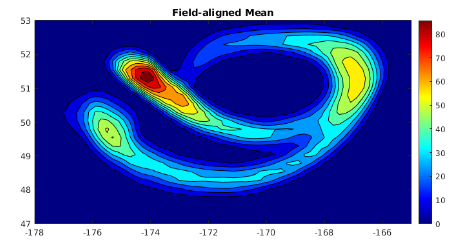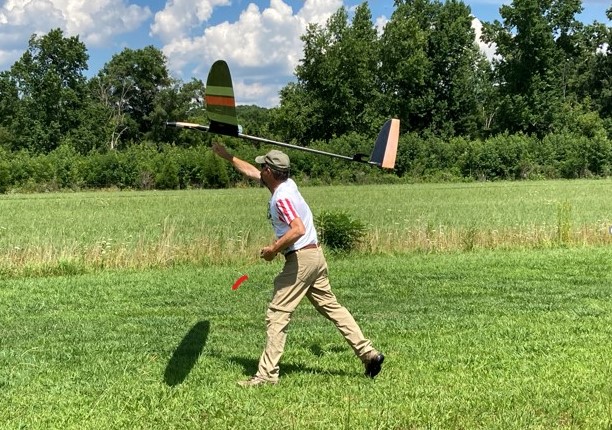ARL Weekly News – July 15, 2022
| Recent Events |
HYSPLIT V8 Approved for Implementation
Implementation of HYSPLIT v8 at the NCEP was presented to the Office Director and approved on July 14, 2022. Scientific upgrades to HYSPLITv8 include upgrading code, coupling of HYSPLIT to GEFS and HREF for probabilistic forecasts of hazards such as volcanic ash plumes, and Time of Arrival information for radiological release forecasts by the RSMC.
Updates to HYSPLIT code will enable the NWS to deliver better information and products to Weather Forecast Offices. Field impressions to date have been positive and the added features were tested by WFOs. One WFO noted that these products “help NWS WFOs more effectively run HYSPLIT…. The ensemble run option is a benefit”
The final code will now be delivered to the NCO for a 30 day stability test, with operational implementation planned for Q4 2022. HYSPLIT is used operationally by NOAA to produce transport and dispersion forecasts of volcanic ash, radionuclide emissions, chemical releases, smoke from wildfires, and wind-blown dust.
Forecasting a Continuum of Environmental Threats (FACETs) program
NOAA’s Forecasting a Continuum of Environmental Threats (FACETs) program gave a report out at the OAR weather portfolio meeting on 13 July. Dr. Alice Crawford reported on the results from the FACETs funded postdoc project “Creating Probabilistic Hazard Information with HYSPLIT ensemble dispersion modeling.” The project was a collaboration between ARL and GSL with Dr. Jorge Guerra working at GSL. Jorge developed HYSPLIT ensemble output in netcdf format to be ingested into AWIPS2/hazard services. He also worked on using the field aligned mean as an alternative to the ensemble mean. https://github.com/jeguerra/Field-Alignment-Python-Port For more information about FACETs see https://wpo.noaa.gov/Programs/FACETs.

Field aligned mean calculated from 31 members of HYSPLIT-GEFS dispersion ensemble. 2008 eruption of Kasatochi in Aleutian Islands. Arbitrary units.
Appalachian Research Commission STEM Camp Outreach Event
Travis J. Schuyler, Ed Dumas and NOAA ARL ATDD interns Faria Panwala and Nicholas Clark presented recent research utilizing small uncrewed aircraft systems (sUAS) to advance atmospheric science and demonstrated sUAS flights collecting boundary layer meteorological data for the Appalachian Research Commission (ARC) STEM camp. Various sources of anthropogenic and biogenic air pollution sources were discussed, and the students at the ARC STEM camp learned about indoor vs outdoor & urban vs rural air quality through carbon dioxide measurements taken at various locations around Oak Ridge, TN. This presentation was followed by live demonstrations of sUAS flight patterns typically used to improve emission estimates.

| Upcoming Conferences |
Unifying Innovations in Forecasting Capabilities Workshop held July 18-22.
Unifying Innovations in Forecasting Capabilities Workshop will bring together the Earth Prediction Innovation Center (EPIC), the Unified Forecast System (UFS), and the UFS Research to Operations communities to explore avenues for their own research development, learn about updates to the UFS, share successes and plan future work. ARL participation include poster contributions on these topics:
- Updating Anthropogenic Emissions for NOAA’s Global Ensemble Forecast Systems for Aerosols (GEFS-Aerosols): Application of Bias Scaling Methods by Gill-Ran Jeong.
- NOAA’s Global Aerosol Forecast Capabilities: GEFS-Aerosols and UFS-Aerosols led by Kate Zhang
- Towards Enhanced Research Capabilities for Improving Air Quality and Atmospheric Composition Prediction within the Unified Forecasting System by Rebecca Schwantes
- Development of Global and Regional Coupled UFS Applications at NWS/NCEP by Avichal Mehra.
| Recent Publications |
Recent Publications
ARL’s FENGSHA Dust Scheme and inclusion in the GEFS-Aerosol modules is described in: Development and evaluation of the Aerosol Forecast Member in the National Center for Environment Prediction (NCEP)’s Global Ensemble Forecast System (GEFS-Aerosols v1), by Zhang, L., Montuoro, R., McKeen, S. A., Baker, B., Bhattacharjee, P. S., Grell, G. A., Henderson, J., Pan, L., Frost, G. J., McQueen, J., Saylor, R., Li, H., Ahmadov, R., Wang, J., Stajner, I., Kondragunta, S., Zhang, X., and Li, F., in Geosci. Model Dev., 15, 5337–5369, https://doi.org/10.5194/gmd-15-5337-2022, 2022.

